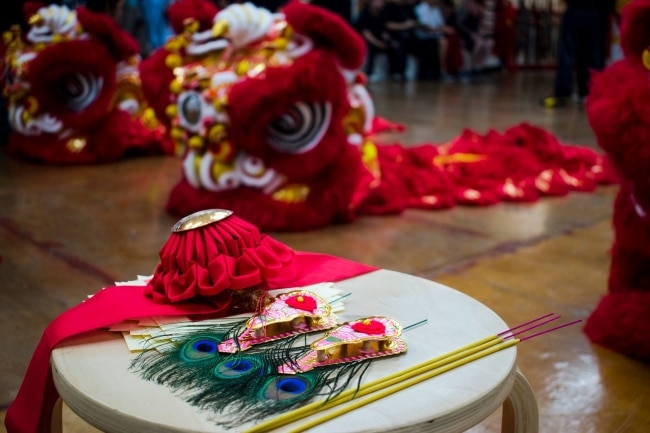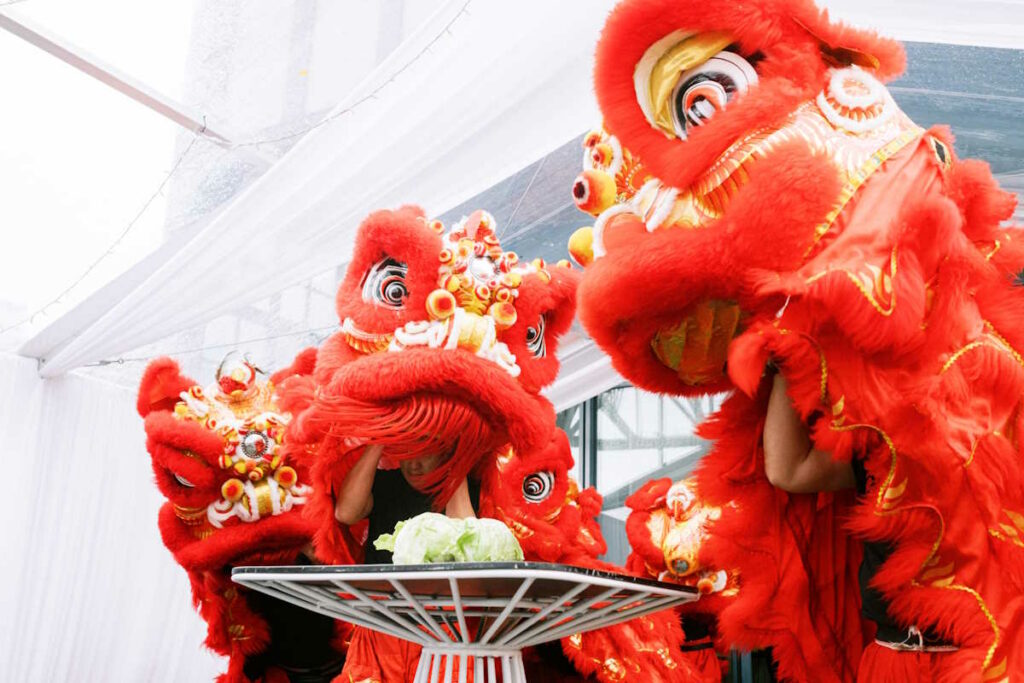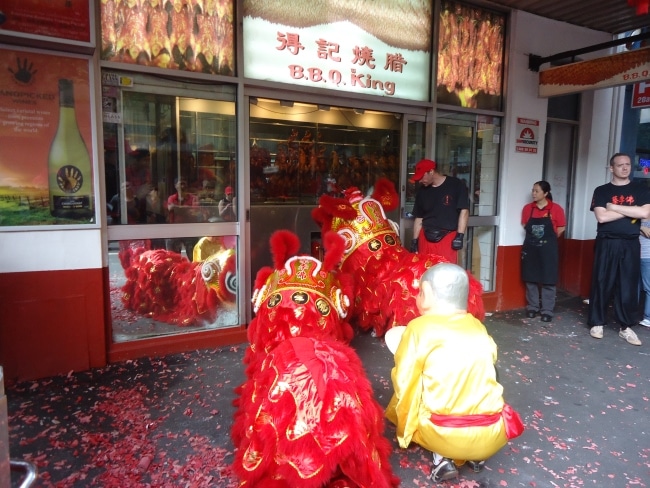There are multiple routines/sections in a lion dance performance. Although the full list is limited only by the team’s imagination, below are the more common elements. Please note that not each routine is suitable for all lion dances and we will tailor the routine to be appropriate for the event.
WAKING UP
This is usually only done when a lion dance team acquires a new lion. There is a ceremony that “wakes” the lion up and imbues the lion with the appropriate spirit. The lion sits on the ground while the drum rolls and an honoured guest dots the lion’s eyes with paint. Other ritual objects are attached to the lion’s head (eg. the “Hong Fa” or Red Flower Ribbon, which is tied around the lion’s horn). The lion starts to roll and stagger around, mimicking the way a baby lion might learn to walk. After a few failed attempts, the lion becomes steady on its feet and goes on its way.

LION’S WALK
This forms a large part of most public performances. The lion walks slowly and carefully, with very deliberate footwork. The lion pays attention to the crowd/spectators and interacts with them — this may involve playing with the crowd, for instance “eating” a spectator’s head.

EATING THE LETTUCE CEREMONY (CHOY CHENG)
In traditional lion dance performances, the team gets its payment through money in a red envelope (Lai Si, Mandarin
Hong Bao) that’s tied up to a lettuce or suitable green vegetable. The lettuce is then hung up at the top of the doorpost, or in other hard-to-reach places. The climax of the performance is the lion “eating” the lettuce.
After “spotting” the lettuce, the lion performs three inspections on it. The first time, it carefully touches it and jumps away, cautious about what it is. The second time, it approaches it from the other side and smells it, retreating once again. Finally it makes up its mind and comes forward with determination to eat it. If the lettuce is in a hard to reach place, this last approach can involve an acrobatic trick, such as the lion’s head jumping on shoulders, or the lion jumping on benches. There may also be “obstacles” the lion must pass through or neutralise before it can access the lettuce.
Once the lettuce is in the lion’s mouth, it swallows a bit (once on each side), then spits a small amount (also once on each side) towards the spectators — this is considered good luck. The lion then turns towards the door and spits out the majority of the lettuce, kicking it while in the air. The lettuce shatters and goes over the doorstop and inside the building — again this is considered good luck.

TABLE TRICKS
When the lion reaches a table at a restaurant, it plays with the patrons, sometimes teasing them or biting their head. If the patron is holding the red packet, the lion will then eat it and bow to the table. However, some patrons may set the packet up so the lion has to perform a trick in order to get it. An example would be a pyramid of drinks with the packet at the bottom of the last glass — the lion would then be required to drink all the glasses before retrieving the red packet.

PAYING HOMAGE (BAI SUN)
This is done if the lion encounters a Chinese altar. The lion gets on its knees and performs a specified order of ritual bows to get to the altar. The altar has a fruit offering (usually oranges or red apples), which the lion performs a ritual on. For an altar to the Chinese god Gwan Gung (the most common altar in Chinese businesses) the lion cuts 5 slices in the skin of the top orange and folds them to look like an open lotus flower. The lion then retreats from the altar performing another set of ritual bows.

KUNG FU DEMONSTRATION
This is an optional extra for the lion dance performance. The lion stops and is replaced by a series of performances of traditional Choy Lee Fut kung fu by members of the lion dance team. The performance is accompanied by a special martial drum beat. It is tailored to fit within the space available in the venue and typically includes both fist forms and weapon demonstrations.

